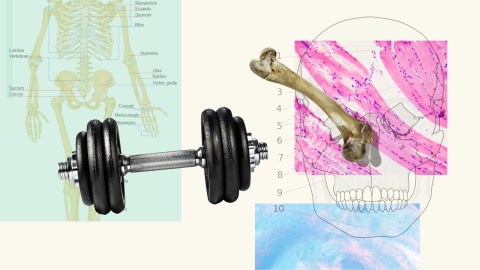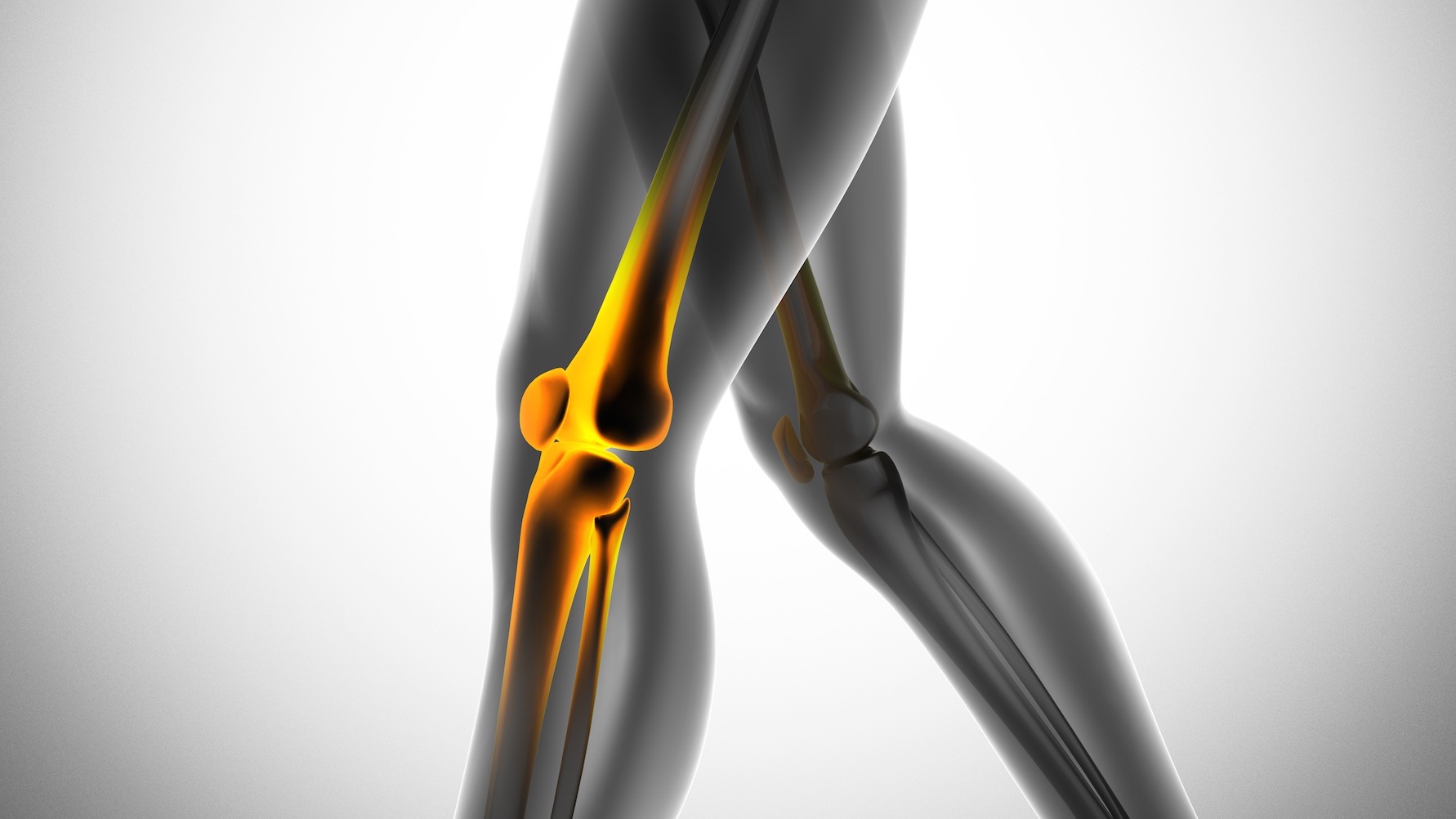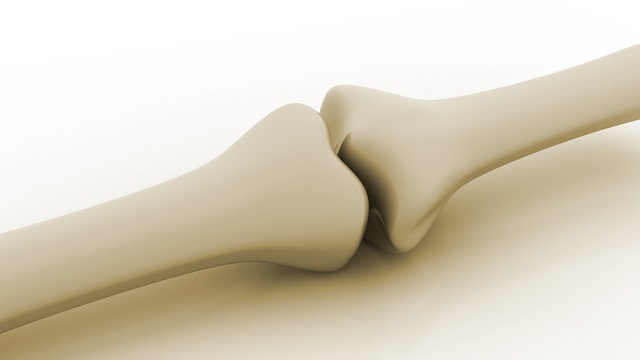Strengthening bone, not muscle, is the reason to lift weights

- The average person loses about 1% of their bone mass each year after age forty. For 3 million Americans each year, this decay results in a condition called osteoporosis, in which their bones become extremely brittle and susceptible to fracture.
- The stress of lifting heavy weights forces your bones to adapt, adding mass. This greatly reduces the risk of fracture over your lifetime, especially in old age.
- A measured weight training program, starting at two days per week of exercises targeting the entire body, can put anyone on the path to more durable, buffer bones.
Building buffness. Getting ripped. Toning up. No matter what it’s called, becoming more muscular is generally top-of-the-mind for any young person who regularly visits the weight room. Less thought about is another key benefit, one that’s not as easily seen but is more long-lasting and consequential: weight training is the best way to strengthen bones.
Remember the milk mustache?
For a long time, conventional wisdom, put in place by omnipresent marketing, heralded calcium intake as the key to strong bones. Recent large studies, however, show that supplementation of the mineral, often found in meat and dairy products, only has a modest effect on bone density, and doesn’t reduce fractures at all.
Lifting weights, however, does. The stress placed on bones by squatting, pressing, deadlifting, pulling, or doing pretty much any motion with added resistance kicks bone-synthesizing cells called osteoblasts into high gear. They start producing collagen, other specialized proteins, and hydroxyapatite — the bone mineral — and forming these raw materials into more bone for your spine, femur, tibia, and any other bones that are bearing the added weight. The result is a stronger skeleton, one more resistant to fracture.
As your skeleton is literally the foundational structure of your body, that’s a big deal. The average person loses about 1% of their bone mass each year after age forty. For about three million Americans each year, this decline eventually results in a potentially debilitating condition called osteoporosis, in which bones become so weak and brittle that a fall or even a mild stressor like bending over or coughing can cause them to crack. Two million osteoporosis-related fractures occur each year, sometimes resulting in permanent enfeeblement. According to Harvard Medical School, “six out of 10 people who break a hip never fully regain their former level of independence”.
Aerobic activities like walking, jogging, swimming, and cycling are all fantastic forms of exercise. Easily accessible and often recommended to older adults, they offer myriad health benefits. However, none come close to building bone like weight training does. And some, particularly walking, jogging, and cycling, can put older adults at risk of falls.
Strengthen the skeleton
A measured weight training program, starting at two days per week of exercises targeting the entire body, broken down into eight to twelve repetitions of two sets per exercise at a manageable resistance on fixed machines, and gradually building up to greater loads with fewer repetitions performed using free-moving weights, can put anyone on the path to more durable, buffer bones.
This skeletal strengthening occurs at any age, but it is most pronounced early in life. In fact, the (understandably) superficial young people referenced at the beginning of the article might want to take note of something a team of endocrinologists wrote in 2018:
“While there is no clear evidence from life-long studies, it is suggested that adaptations to mechanical loading in youth are translated to greater bone strength over a lifetime. Bones become less sensitive to mechanical loading after skeletal maturity is reached at 18 to 25 years of age.”
Muscle comes and goes, but bones could last forever.





